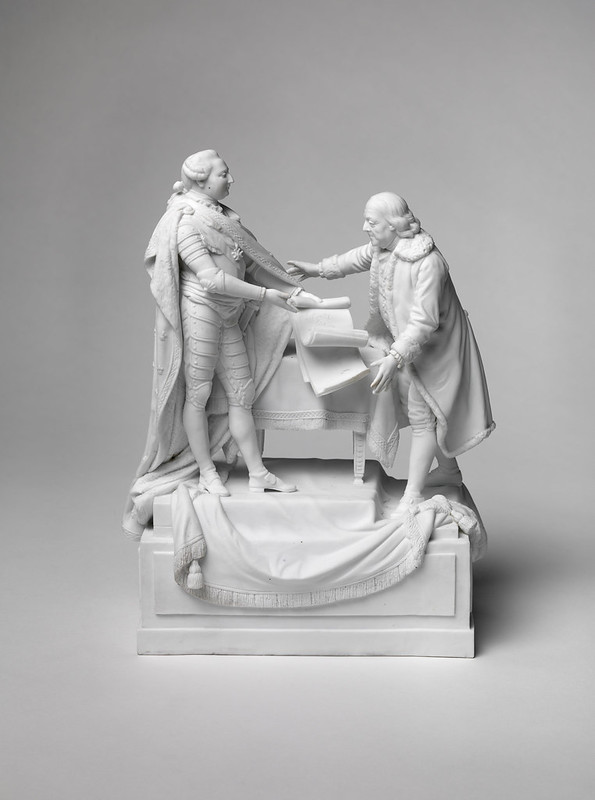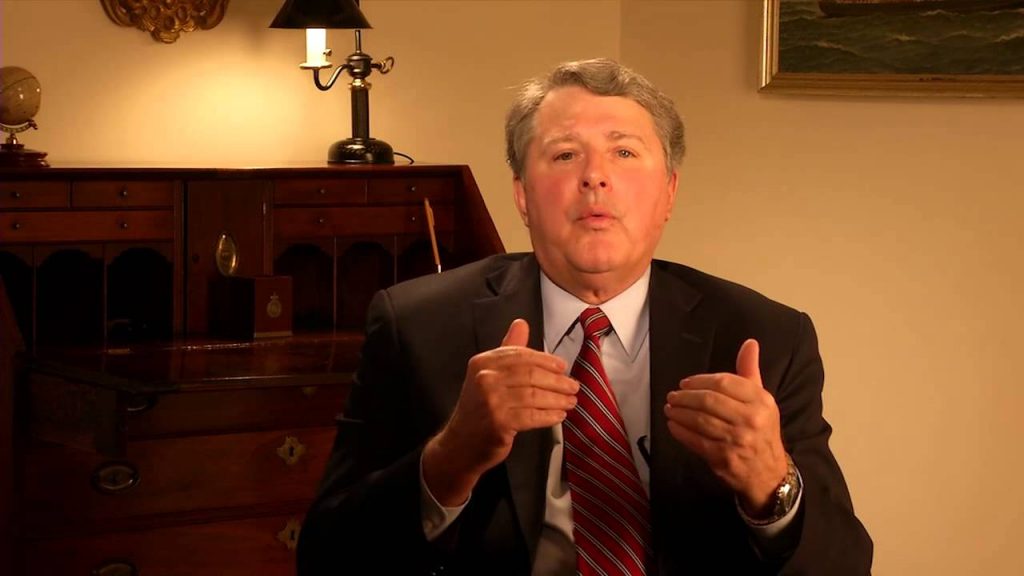Jennifer Paulsen, Holmes Junior High School, Cedar Falls, Iowa
DESIGN LEVEL: Middle School

Overview
In 1824-25, the Marquis de Lafayette, the last surviving French general of the American Revolution, was invited by President James Monroe to tour the United States. With this lesson, students will learn about Lafayette’s triumphant American return, and his influence on America into the twentieth century.
Materials
Lafayette Returns to America, New England Historical Society
World War I commemorative handkerchief, ca. 1918, The Society of the Cincinnati
Observe-Reflect-Question Primary Source Analysis Guide, Library of Congress
Recommended Time
20-45 minutes
Activity
Ask students to read the The Nation’s Guest and Lafayette Returns to America to learn about the Marquis de Lafayette’s 1824-1825 American visit.
Have students use the Library of Congress’s Observe-Reflect-Question primary source guide to analyze the collection items listed under Materials, and to explain how the objects connect Lafayette to the theme of America’s republic.
Standards Addressed
IOWA CORE STANDARDS FOR SOCIAL STUDIES
Grade 8, Inquiry Anchor Standard
SS.8.4 Independently, evaluate the credibility of primary and secondary sources by determining their relevance and intended use.
Learning Target: Identifying Bias.
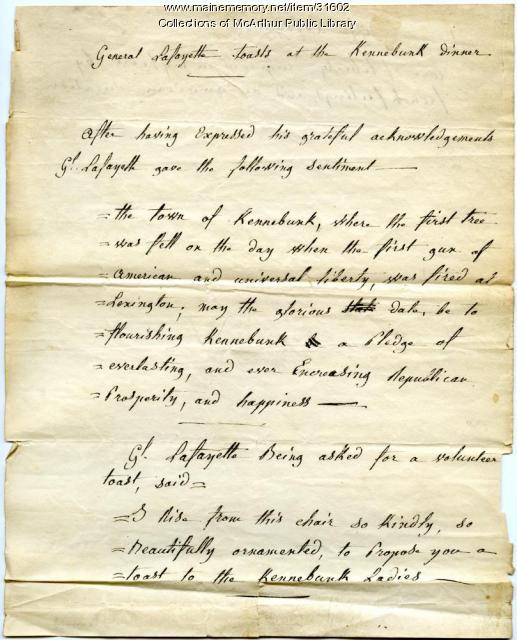
General Lafayette's toast given at Kennebunk
James Remick
1825McArthur Public Libarary, Maine Historical Society
A copy of the remarks and toast made by General Lafayette when he dined at Kennebunk during his visit to the area in 1825, written down by James Remick of Kennebunk who attended the event. During this visit Lafayette stopped twice in Biddeford to visit with his war comrades, including Captain Seth Spring. He dined at the Captain's home on Spring's Island and attended church in Biddeford as well.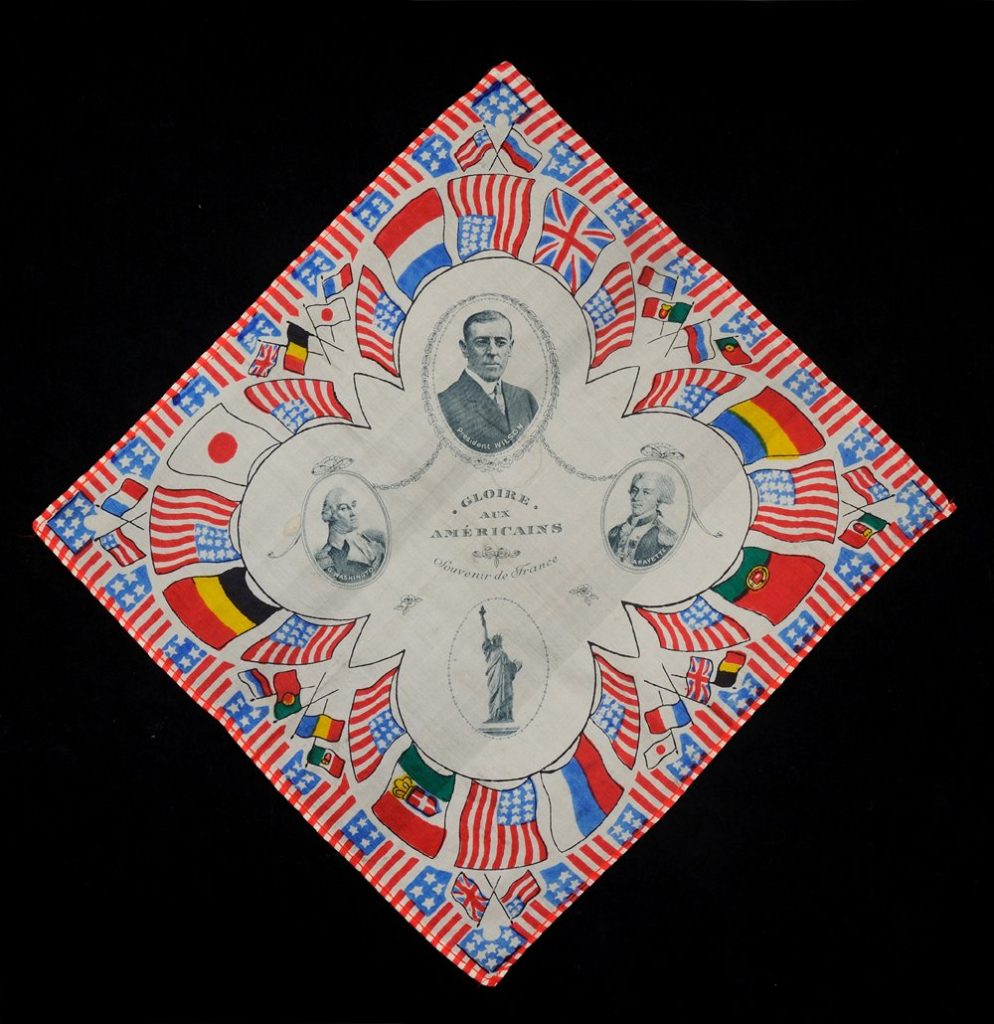
World War I commemorative handkerchief
French
ca. 1918The Society of the Cincinnati, Gift of Jacques Querenet, Société des Cincinnati de France, 1978
Square silk handkerchief commemorating the Allied victory of World War I and the repayment of the United States' Revolutionary War debt to France, made in France, ca. 1918. These mass-produced handkerchiefs were symbols of the allied forces and leaders of nations who fought together, and served as a tangible memoire to send or bring back to the home front.The white, plain weave silk is printed using a two-part process of chromolithography and intaglio techniques, with four oval cartouches, featuring bust-length portraits of George Washington (titled "G. WASHINGTON"), Woodrow Wilson (titled "Président WILSON"), and the marquis de Lafayette (titled "G. LAFAYETTE") and a full-length image of the Statue of Liberty, within a quatrefoil border. In the center is the text "GLOIRE / AUX / AMÉRICAINS / Souvenir de France." The quatrefoil border is outlined with the flags of the Allied countries, with crossed flags at the points and in the corners of the handkerchief. The handkerchief has an exterior border of American flags. It appears that they may have been printed en masse, in grids of squares, using a larger yardage of silk, and subsequently cut. Some of the edges are hemmed (presumably much later), some raw and one is the selvedge, lending to the conclusion that the edges were printed red to appear hemmed or finished, also providing guidelines for cutting.
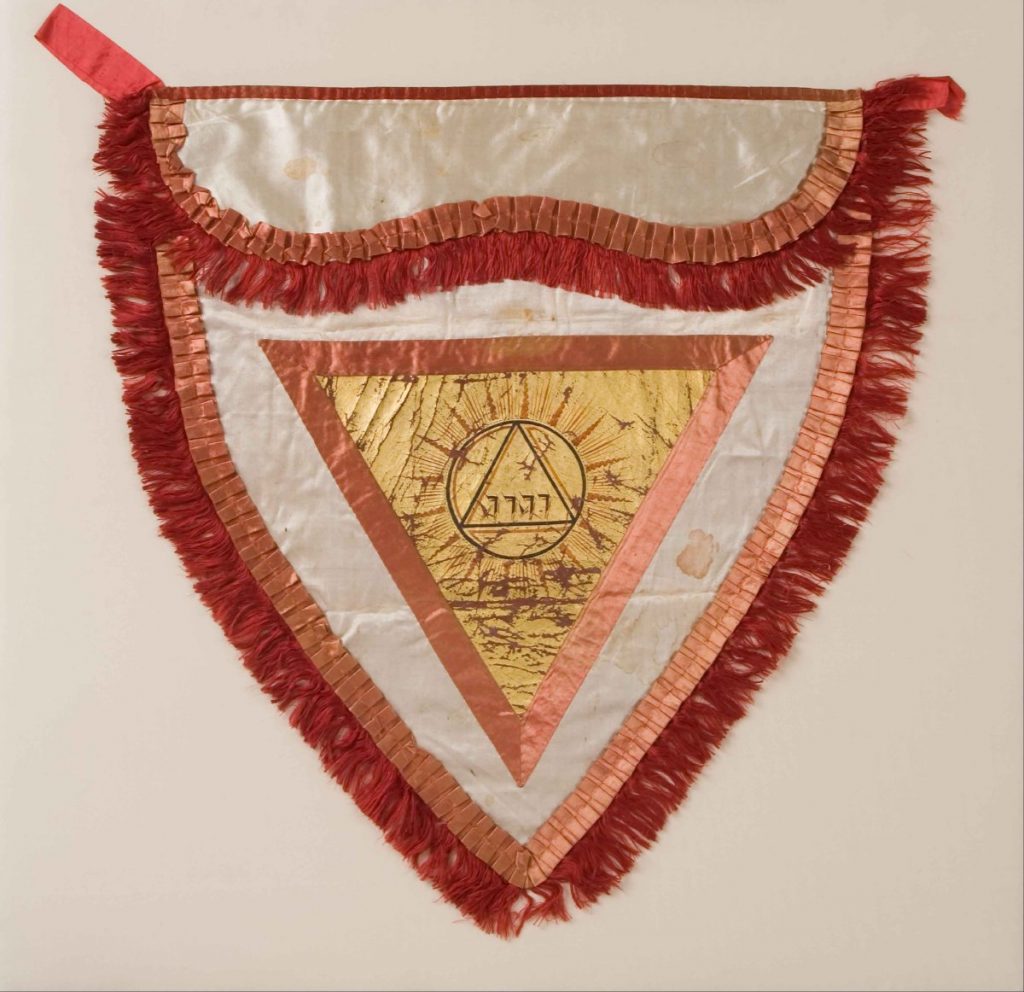
Scottish Rite Lodge of Perfection Masonic apron owned by Richard Clough Anderson and worn by the marquis de Lafayette
ca. 1815-1825The Society of the Cincinnati, Gift of Isabel Anderson, 1938
Scottish Rite Lodge of Perfection Masonic apron owned by Richard Clough Anderson (1750-1826), an officer in the Virginia Continental Line and aide-de-camp to the marquis de Lafayette during the Revolutionary War and an original member of the Society of the Cincinnati in the State of Virginia, made in the United States of America, ca. 1815-1825. Reportedly worn by the marquis de Lafayette during his visit to the Masonic Lodge in Louisville, Kentucky, in May 1825.Shield-shaped apron made of cream-colored silk with orange silk trim and red silk fringe around the flap and body of the apron. An up-side-down triangle appears in the center of the apron trimmed in orange silk. The triangle contains the Hebrew letters of the tetragrammaton (the name of God) within a delta symbol within a circle surrounded by rays of the sun, all on a gold painted background. Backed with a plain red silk lining.
